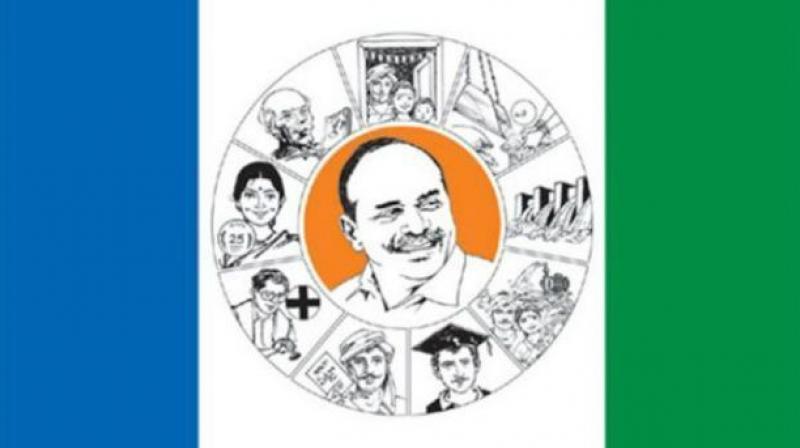YSRC fields Vemreddy in RS polls, turns on heat
The biennial elections to the Rajya Sabha to fill up three vacant seats in Andhra Pradesh.

Hyderabad: The biennial elections to the Rajya Sabha to fill up three vacant seats in Andhra Pradesh, took an interesting turn on Saturday when the YSR Congress announced that it will field Vemreddy Prabhakar Reddy, an industrialist and philanthropist from Nell-ore district, as its candidate. The ruling Telugu Desam has been mulling over the possibility of fielding a third candidate from the party to win the seat with the help of 23 MLAs who defected from the YSRC to the TD.
The total number of electors for the Rajya Sabha polls is 175 MLAs. The YSRC, which had 67 MLAs at the beginning of the Assembly term, now has only 44, with 23 legislators swi-tching sides to the TD in the last three-and-a-half years.
There are three vacancies from Andhra Pradesh with the retirement of sitting MPs Renuka Chowdary and K. Chiranjeevi (Congress) and T. Devender Goud (TD). Except for the 44 MLAs of the YSRC, the other 131 legislators are with the TD-BJP ruling combine.
Interestingly, to secure a win for one Rajya Sabha seat, a minimum 44 MLAs first preferential votes are needed. As the YSRC has exactly 44 MLAs now, the ruling TD-BJP combine will have 43 surplus votes available for their third candidate after adjusting 44 votes each to their two nominees.
However, it is not as simple as that. The YSRC does not command second preference votes as there is only one candidate from the party, while the TD can allot second preference vo-tes to its third candidate be-sides adjusting 43 first preference votes. In case of a tie, the value of the second preference votes becomes crucial to clinch victory.
In the 2016 elections to the Rajya Sabha, there were four vacant seats and the TD fielded candidates for three seats and the YSRC contested for one, thus making the election unanimous.
Over the last two years, though, the TD has mana-ged to get YSRC legislators to defect to its side and the present thinking in the party is to field a third candidate to defeat the YSRC candidate.
Here, the system of Open Ballot in the Rajya Sabha elections comes into play. The MLAs originally elected from a political party have to show their ballot paper, after marking their preference, to the Election Agent put up by the party, before putting it in the ballot box. Section 59 of the Representation of People’s Act was amended in 2003 for the purpose. This makes it mandatory for all the 23 MLAs of the YSRC to show their marked ballot papers to the election agent put up by the party.
However, no disqualification of the member is allowed on the grounds that he voted for a candidate other than the candidate put up by his original party.
This Open Ballot system was introduced to bring transparency into the voting.
However, it is for the party to take disciplinary action against a member who has not voted for the party’s candidate. Since it is an election, no whip will be entertained in the Rajya Sabha polls and any whip issued by parties will be invalidated.
In the Rajya Sabha polls held in Gujarat in August last year, the Election Commission had declared two votes cast by the two Congress rebel MLAs as invalid for showing their marked ballot papers to others instead of to the Election Agent put up by the Congress party. The Congress party complained that two of their MLAs had shown their marked ballot papers to BJP president Amit Shah, the BJP Rajya Sabha nominee Smrithi Irani and the BJP supported Independent candidate Balwantsingh Rajput in the polling station. This was a violation of election laws. Had these two MLAs not shown the ballot papers to others, the Independent candidate would have got two more votes and he would have been declared elected instead of the Congress nominee Ahmed Patel.
The Congress expelled a total of 14 MLAs from the party after coming to know that these legislators had not voted for the party’s official nominee.

